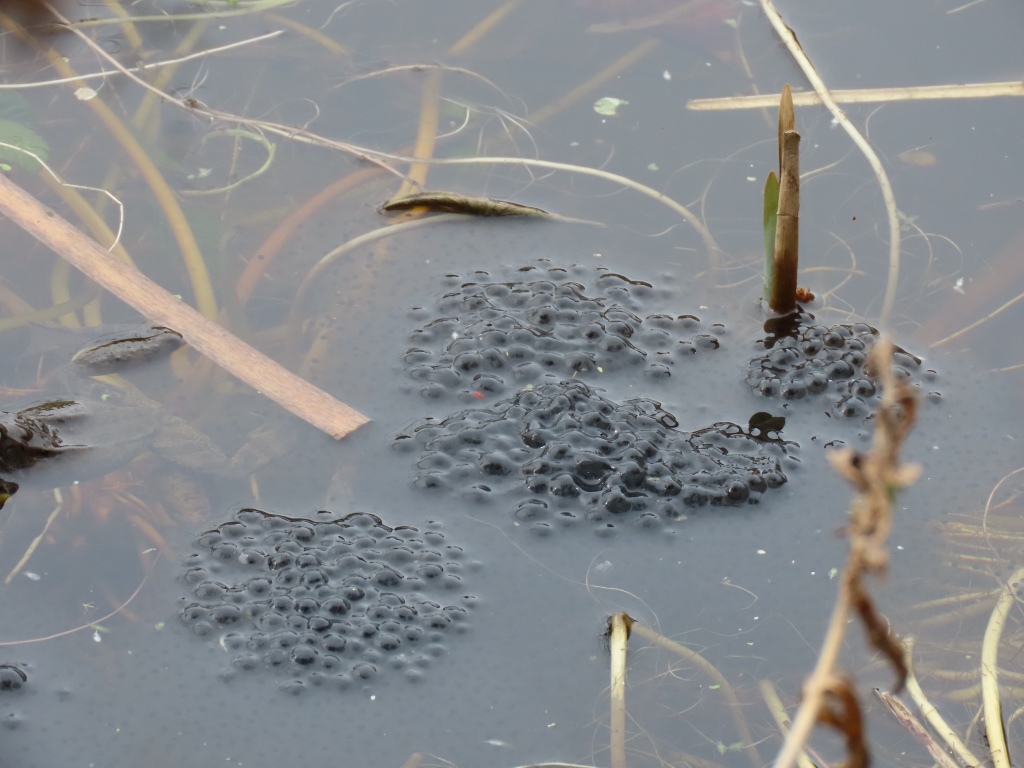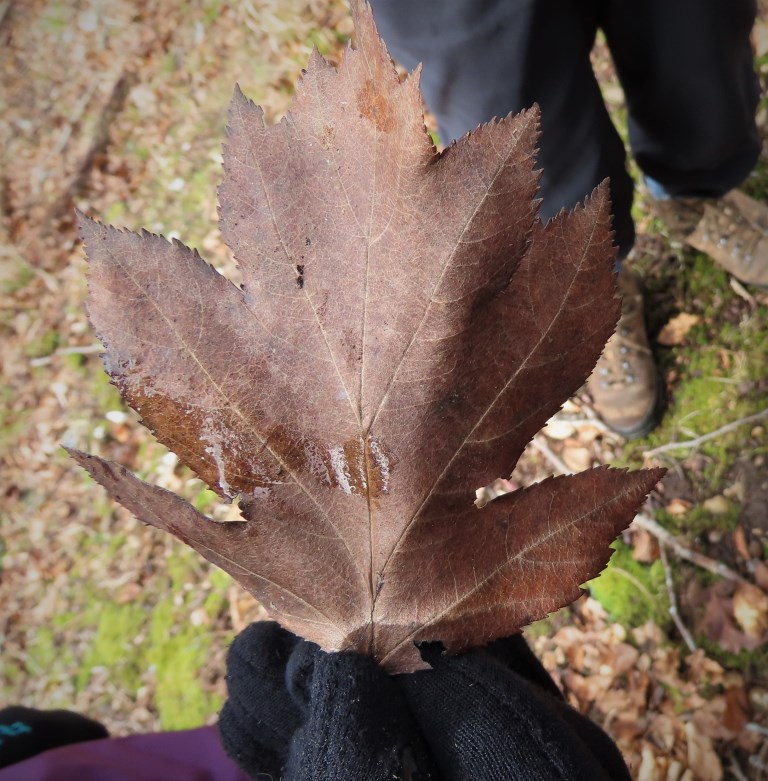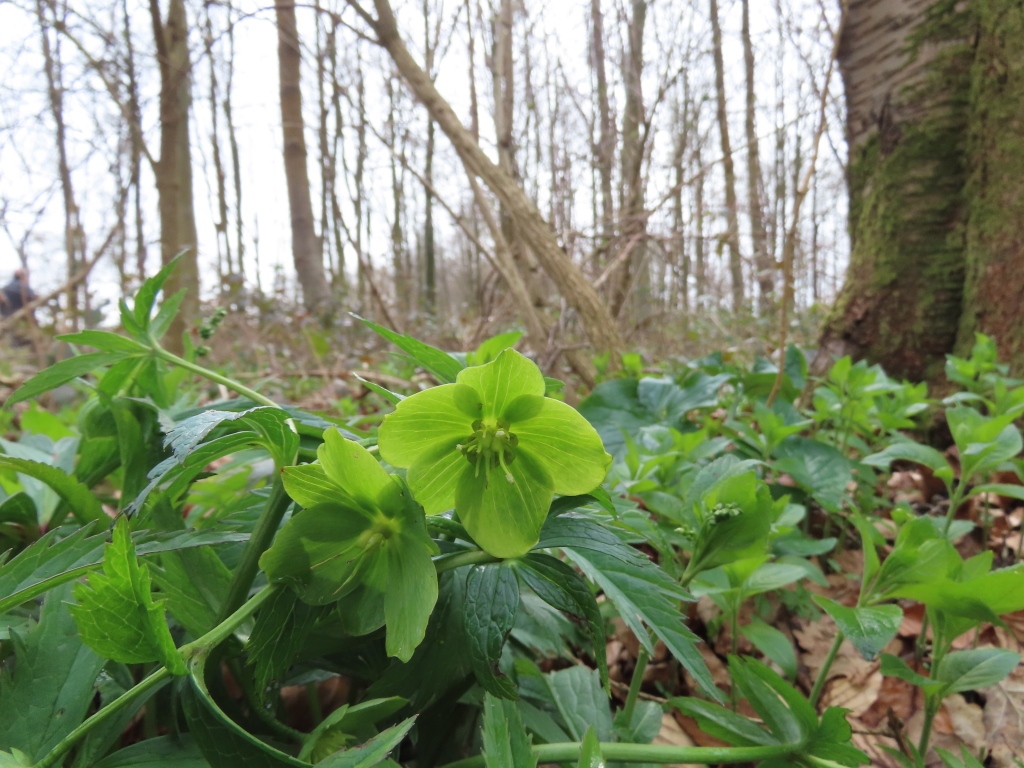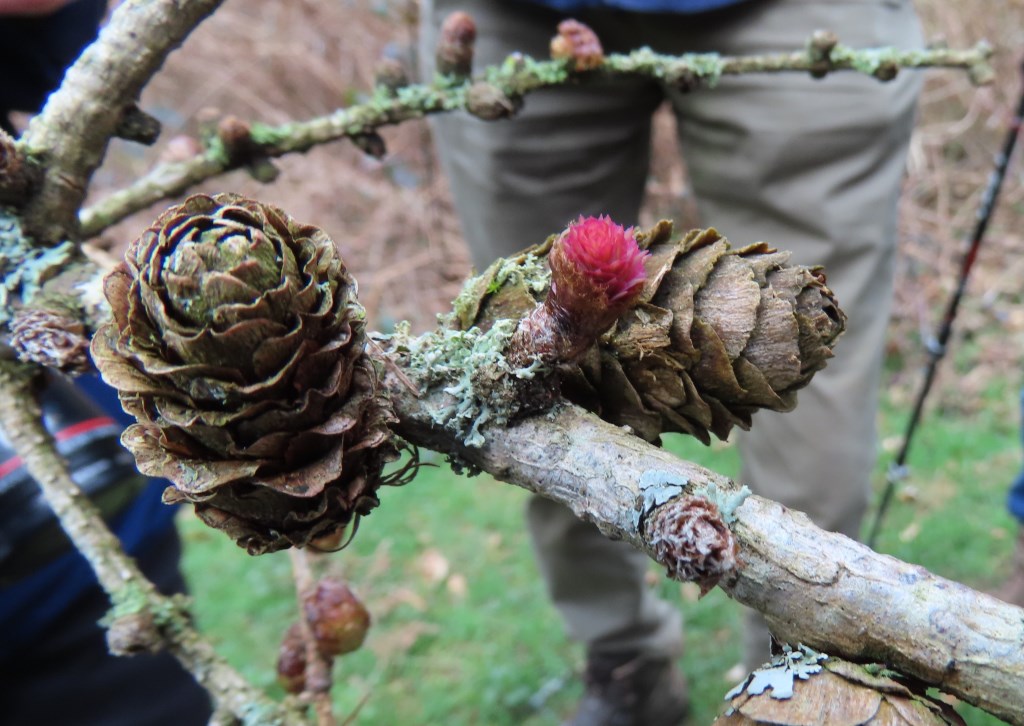On Wednesday 15 March, Jerry Welsh led a walk to Flowercroft Wood, starting from Rotherfield Peppard Church. Common Frogs and frogspawn were spotted in a small pond at the end of the car park. The walk started out south-eastwards along a track past the church, before turning right onto a footpath which followed the field edge. A large clump of Parsley-piert was seen here. The footpath led round the edge of a field with woodland on three sides. Jerry described it as an ‘assart’, the historic name for land cleared from woodland for cultivation. He said there was still a faint trace of the ridge and furrow pattern left by medieval ploughing, together with the headland where the oxen would be turned round. The woodland beyond contained a large chalk pit. The path then turned eastwards, following the field edge. A section of the hedge bottom was white with Snowdrops. Jerry pointed out the remains of a ruined cottage on the far side of the hedge. Its garden would have been the source of the Snowdrops. A Mistle Thrush was singing nearby. Ahead, a grassy field with south and west facing slopes is a good place to see masses of orchids in summer. Some years ago, Jan and Jerry found a blue Pimpernel flower here. Its identity was confirmed by experts as the rare Anagalis arvensis ssp. foemina, an archaeotype which was first introduced in the Iron Age. Apparently there is an Iron Age settlement nearby. The next section of the route followed the ride which runs along the bottom of Flowercroft Wood. Honeysuckle, larval foodplant of the White Admiral butterfly, draped some of the ride-side trees. Spurge-laurel, with greenish flowers, and Wood Spurge were also seen here. There followed a steep climb up through the wood, passing a spot where Jerry said that Adder’s-tongue Fern can be seen in early summer. The path emerged at Kent’s Hill, where there is fine chalk grassland, dotted with many ant-hills. Leaf rosettes of Salad Burnet were easily identified and Wild Thyme was growing on the tops of some of the ant-hills. The walk continued along a track which runs along the top of Flowercroft Wood. A short distance into the woods on the left side of the track was a cluster of Wild Service-trees. Their distinctive leaves could be seen on the ground beneath the trees. It is a species which suckers readily. A distinctive pebble was found in the root plate of a nearby fallen tree. A layer of Gravel lies on top of the Chalk here. The pebble was smooth and made from a fine-grained material which was not Flint. It was crossed by several layers of Quartz. It is likely to have originated in Wales or the Midlands, not in the present-day catchment of the River Thames. Further on, on both sides of the track, were a number of Green Hellebore plants with their green flowers fully out. Primroses were in flower, their pale yellow petals a pleasing change from the green of the Hellebores and the Spurge-laurel. The next track led steeply down through the woods. A number of the small red cone-shaped flowers of larch were seen on this stretch. At the edge of the wood, the route turned northwards, following the parish boundary. A solitary tree on the boundary is labelled ‘Ash’ on the Ordnance Survey map – but at the marked position was a very old Crab Apple tree. Its top had been cut off, but what remained of the tree looked to be in good health. A number of big old multi-stemmed Field Maples with knobbly trunks marked out the boundary line. The largest specimen measured 9 metres in circumference. A small fungus on Blackthorn was identified as the Cushion Bracket Phellinus pomaceus. The final section of the walk followed a footpath through secondary woodland across a golf course. Most of the group then drove to the Maltsters Arms at Rotherfield Greys for lunch.




Pictures by Fiona Brown
